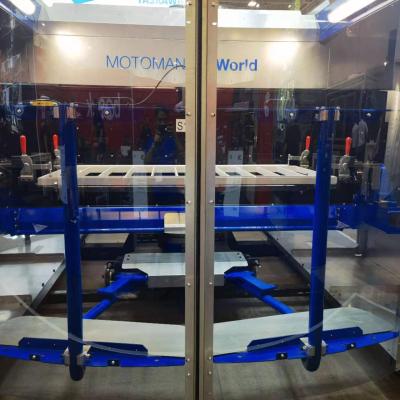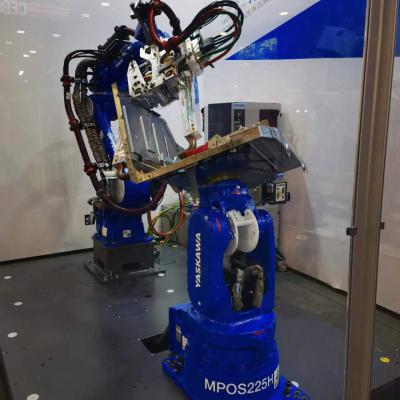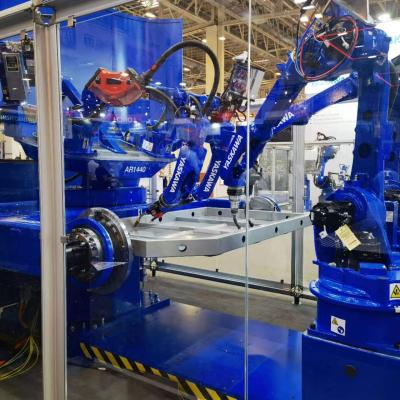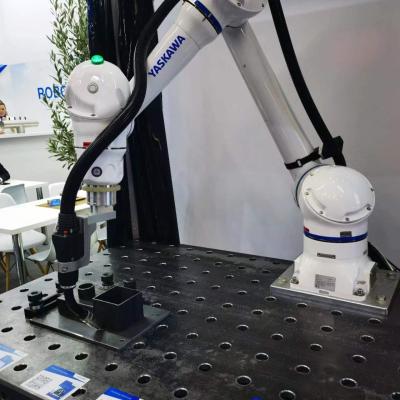For many small to medium enterprises (SMEs) in the metal fabrication industry, deciding whether to invest in welding automation can seem like a daunting
task. While the upfront costs of implementing automation solutions might appear high, the long-term benefits in terms of productivity, efficiency, and overall cost savings make it a wise choice. This cost-benefit analysis will help SMEs understand the financial and operational advantages of transitioning to welding automation and how it can positively impact their bottom line.
Initial Costs of Welding Automation
The upfront investment in welding automation includes several components:
-
Robotic Welding Systems: Depending on the type and complexity, robotic welding systems can cost between $100,000 and $250,000 per unit. The price may increase if the system includes additional features like advanced seam tracking or specialized welding capabilities (e.g., laser or hybrid welding).
-
Installation and Setup: Beyond purchasing the robot, there are costs for installation, integration, and setup. This can range from $10,000 to $50,000, depending on the complexity of the system and the size of the factory.
-
Training and Workforce Transition: Implementing automation means training employees to operate, program, and maintain the systems. Training costs vary but can typically range from $5,000 to $15,000 depending on the expertise required.
-
Maintenance and Upkeep: Robotic systems require regular maintenance to ensure they perform at optimal efficiency. Annual maintenance costs are estimated at 1-3% of the initial system cost, typically ranging between $5,000 and $10,000 annually for a well-maintained system.
Cost Savings with Welding Automation
1. Labor Cost Reduction
One of the most significant benefits of welding automation for SMEs is the reduction in labor costs. Skilled welders are in high demand, and their salaries reflect this. The median salary for welders in the U.S. is around $47,000 per year, with experienced welders earning well over $60,000 per year. Robotic systems can perform the work of multiple welders, significantly reducing the number of employees required on the shop floor.
A single robotic welding system can replace two to four full-time welders, which translates into substantial labor savings. Over time, the reduction in salaries, benefits, and overhead can cover the initial cost of the system. SMEs often see labor cost reductions of 20-30%, which can dramatically improve profit margins.
2. Increased Productivity and Output
Robotic welding systems are capable of operating 24/7 without the need for breaks, rest, or shift changes. This constant operation increases production capacity, allowing SMEs to meet larger orders or faster delivery times without hiring additional staff.
For example, robotic welding systems have been shown to improve productivity by up to 60% compared to manual welding. This increase in output allows SMEs to take on more projects, reduce lead times, and offer more competitive pricing, all while maintaining high-quality production standards.
3. Consistent Quality and Reduced Rework
Manual welding, while flexible, is prone to human error. Inconsistent welds can lead to costly rework, delays, and material waste. Automated systems, by contrast, offer unparalleled precision and repeatability. With advanced seam tracking and real-time monitoring, robotic systems can ensure 99.9% accuracy in welds, reducing the risk of defects and rework.
By minimizing rework and material waste, SMEs can save on both labor and materials, improving overall profitability. Over time, the reduction in defective products and rework can provide significant savings, especially in industries where precision is critical (e.g., automotive or aerospace).
4. Safety and Liability Reduction
Welding is inherently dangerous, with risks including burns, eye injuries, and exposure to harmful fumes. By implementing robotic systems, SMEs can reduce the number of workers exposed to these hazards, which in turn reduces workers’ compensation claims, downtime from injuries, and potential liability.
Automated systems operate in controlled environments, ensuring safer working conditions. Improved safety can also lower insurance premiums, providing further long-term financial savings for SMEs.
Long-Term Return on Investment (ROI)
One of the most attractive aspects of welding automation is the potential for a high return on investment (ROI). The ROI for robotic welding systems can typically be achieved within 18-24 months, depending on the size of the operation, production volume, and labor costs in the region.
For example:
- A robotic welding system that costs $200,000 with an estimated $60,000 in annual labor savings will break even within 3-4 years.
- If the company sees a 20% increase in productivity, it could generate an additional $100,000 to $200,000 in revenue annually, further accelerating ROI.
Scalability and Growth Potential
Welding automation provides a scalable solution for SMEs looking to grow. As demand increases, businesses can add additional robots to their production lines without facing the bottlenecks associated with hiring and training skilled welders. This flexibility allows SMEs to scale up quickly and efficiently, capturing larger market opportunities.
Moreover, SMEs that adopt welding automation are better positioned to compete with larger corporations. With lower costs, higher efficiency, and consistent quality, SMEs can offer competitive pricing and improved customer satisfaction, gaining a competitive edge in the marketplace.
Challenges and Considerations
While the benefits of welding automation are clear, SMEs should be aware of potential challenges:
-
Upfront Costs: Although long-term savings are significant, the initial investment can be a barrier for some SMEs. Careful financial planning and exploring financing options, such as leasing or government grants, can help mitigate this challenge.
-
Change Management: Transitioning from manual welding to automation can be disruptive. It's essential to manage this change effectively, involving employees in the process and providing adequate training to ensure a smooth transition.
-
Customization Needs: Some welding tasks may require customization to integrate automated systems effectively. SMEs need to evaluate their specific production needs and ensure that the chosen automation solution can handle complex or non-standard welds.
Conclusion: The Cost-Benefit Ratio is Clear
For SMEs in the metal fabrication industry, the decision to invest in welding automation should be seen as a strategic move toward long-term sustainability and growth. While the initial investment might seem high, the benefits—reduced labor costs, increased productivity, improved safety, and higher quality—far outweigh the costs over time.
By conducting a thorough cost-benefit analysis, SMEs can see that the return on investment in welding automation can be achieved quickly, often within a few years, making it a critical step in staying competitive in an increasingly automated world. For those looking to scale their operations, improve efficiency, and reduce costs, welding automation is not just an option—it’s the future.
Would you like additional data or statistics to strengthen specific points in this article?









